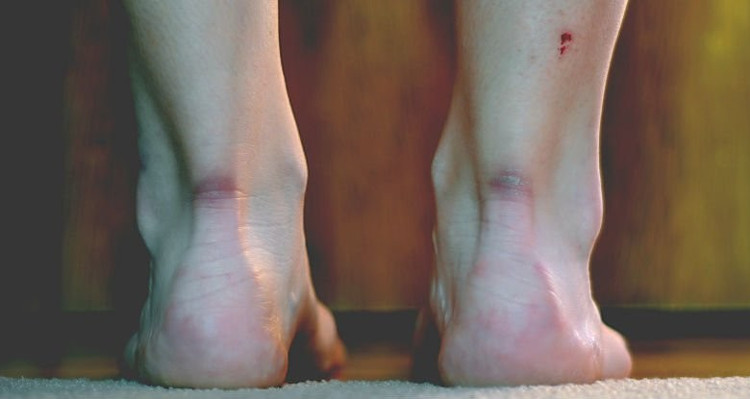New finding: 'Transplanting hair' into the wound for permanent scar removal
If you've ever wondered, why does a scar look different from normal healthy skin and look right away, that's because the scar tissue doesn't contain any fat cells or hair follicles.
If there is a surgical scar, carelessness or even a bicycle fall from an early age, anyone wants it to disappear. And sadly, scientists argue that scars cannot be cured in mammals, including humans.
However, recent research in Science has opened a new hope. Researchers have found a way to make the scars permanently disappear by implanting hair follicles or hair follicles into the wound .
One of the team members, George Cotsarelis - Dean of the Department of Dermatology at the University of Pennsylvania said: "Basically, we can use regenerative skin to heal wounds without leaving a trace. "The secret here is that we must first recreate hair follicles, then the fat will be regenerated to respond to signals from these hair follicles."
Perhaps you have wondered why scar tissue looks different from normal skin, because scar tissue does not contain any fat cells or hair follicles. The regenerated skin on a small and shallow cut contains fat cells called adipocytes - just like your skin was born. These two types of cells will mix together when the wound heals.

without scarring.(Photo: Flickr).
In the case of deep wounds or greater damage, the body heals it with a type of tissue called myofibroblasts . Myofibroblasts do not contain any fat cells, so it looks completely different from the surrounding natural skin tissue. That's why deep wounds will leave scars, permanently existing on your skin.
The same thing happens with wrinkles when you get older. Wrinkles form when the skin loses adipocytes and this process is also thought to be irreversible.
But scientists have discovered that myofibroblast cells can actually be converted into adipocytes. This means that when a wound heals, scar tissue can be converted into regenerated skin. This is what scientists think can only happen in fish and amphibians.
Maksim Plikus, one of the researchers at the University of California, Irvine, said: "These findings suggest that we have an opportunity to heal wounds with regenerated tissue without scarring." Previous research by the group showed that fat cells and hair follicles developed separately but not independently in regenerated skin. Hair follicles will always develop first, then fat cells.
Scientists believe that the development of hair follicles can actually support the development of fat cells during skin regeneration. So they want to see what happens if they stimulate hair follicles to develop in newly formed scar tissue in mice and human skin samples in the lab.
This will never happen in nature because the scar tissue does not contain hair follicles in it. The researchers found that hair follicles secrete a signal protein called Bone Morphogenetic Protein (BMP) as soon as they begin to form, and this actually converts myofibroblasts in scar tissue into adipocytes.

The process of wound healing.(Photo: Science).
If the follicle is stimulated to grow where the wound heals, then the newly formed skin will be identical to the area of the skin available."Usually, people think that myofibroblasts cannot become another type of cell. But our work shows that we have the ability to affect these cells, and they can be transferred," said Cotarelis . effectively and stably convert into adipocytes ".
Despite the positive results, the test only proved effective in mice and human skin samples. To develop hair follicles on a wound in humans is a completely different thing. If the team could somehow replicate this result in human experiments, this would be a great success. If we can find a way to affect BMP in scar tissue, science will have completely new methods to heal wounds without scarring.
In fact, the skin is the largest organ in the body and it is also amazing. Every 24 hours, the skin peels off about 500 million dead cells but the skin remains intact. Therefore, it is hoped that the findings from this study will lead to a cure or even a scar removal in the future.
- Tape of scar-scarring
- Video: Mechanism of scar formation in skin and viscera
- Is it true that the hair will grow back thicker and darker after each shave?
- The truth is little known about pubic hair
- Hello, messy hair
- How does the wound heal?
- Video: Great way to peel products very fast, extremely clean
- The worrisome consequences of tweezers are tweezers
- Finally science also found a way to heal without leaving a scar
- 50 The incredible truth about hair
- Why silver hair back?
- The patch helps to heal wounds
 Green tea cleans teeth better than mouthwash?
Green tea cleans teeth better than mouthwash? Death kiss: This is why you should not let anyone kiss your baby's lips
Death kiss: This is why you should not let anyone kiss your baby's lips What is salmonellosis?
What is salmonellosis? Caution should be exercised when using aloe vera through eating and drinking
Caution should be exercised when using aloe vera through eating and drinking Why does ice stick to your hands when you hold it?
Why does ice stick to your hands when you hold it?  Doctors warn about the 'secret' of soaking your face in ice water to stay young
Doctors warn about the 'secret' of soaking your face in ice water to stay young  'Unexpected' source of nutrients from the peels of many vegetables and fruits
'Unexpected' source of nutrients from the peels of many vegetables and fruits  From 'monster' to 'treasure': This horror species is helping many people make a fortune
From 'monster' to 'treasure': This horror species is helping many people make a fortune  How are freckles different from melasma?
How are freckles different from melasma?  Discovery of dinosaur fossils with feathers and scales
Discovery of dinosaur fossils with feathers and scales 